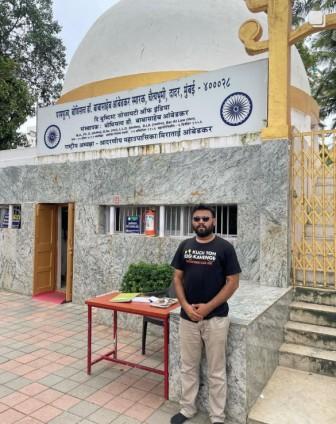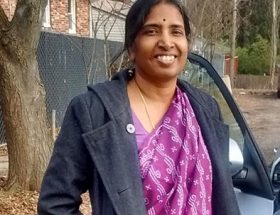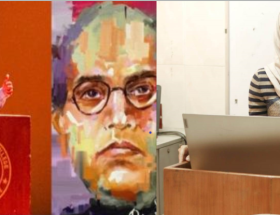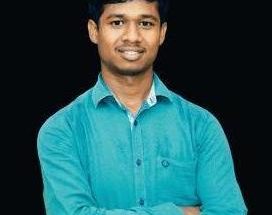Satish Parghi
In the vibrant tapestry of Gujarat’s socio-political landscape, a significant and powerful movement has emerged— Dalit assertion. Rooted in a history of discrimination and social marginalization, this movement represents the collective voice of Gujarat’s Dalit community striving for equality, justice, and the recognition of their inherent dignity. This article delves into the historical context, key events, and ongoing struggles that define Gujarat’s Dalit assertion.
The assertion manifests in various forms, encompassing political participation, protests, legal activism, cultural expression, and educational empowerment. By seeking representation in political bodies, Dalits have aimed to influence policy decisions and address long standing grievances.
The Dalit assertion in Gujarat is deeply intertwined with the broader history of the Dalit movement in India. Dalit literature began in Gujarat with the emergence of Dalit Panthers in Gujarat. Many poets, writers, and activists wrote poetry, short stories, novels, and autobiographies. Panther, a journal in the Gujarati language, was published by the Dalit Panthers in 1974 under the editorship of Ramesh Chandra Parmar. He played a crucial role in the Dalit movement and social justice for the Dalits. (Rajesh Lakum, Retrieved from The Dalit Resurgence In Gujarat (outlookindia.com)
The Republican Party of India (RPI) was working and active for social causes in Gujarat, and Parmar was active in the RPI movement and Dalit Panthers organisation. In the Jetalpur, (Ahmedabad) incident (1980), a Dalit youth, Shakrabhai, was burned alive due to a land conflict between Dalits and non-Dalits. The Dalit Panthers agitated against the Jetalpur atrocity. Due to the Dalit agitation and mobilisation against caste oppression—demanding justice for landless Dalits—the court punished the accused with life imprisonment. The Dalit Resurgence In Gujarat (outlookindia.com)
The decade of 1990-2000 witnessed terrible atrocities against Dalits in Gujarat. These incidents took place in Vasana (1990), Pardi, Kalodra, Jashapur and Muktipura (Navagam) (1991), Pransali and Vadodara (1992), Ukhlod and Tundel (1993) and Galodar, Kaparupur (1994). And these incidents—such as Sagpur, Kankanol, Sewani, Salatwado, Makhaniya, Sanand, Chandkheda, Vans Jaliya, Bhadaran, Sundarpura, Radhu and Kuntalpur (1995), Bhimpura and Jhanjharaka (1996), Rampur Kampa and Jejad (1997)—were torn by violence against the Dalits. Thousands of atrocities such as murder, rape, assaults, land grabbing and social boycott took place against the Dalits. Wherever such injustice arose, the Dalit Panthers leader, Parmar, visited the sites and ushered the call for justice. He advocated for the rights of the Dalits. The Dalit Resurgence In Gujarat (outlookindia.com)
On July 11, 2016, more than 40 men from the upper caste Darbar community had assaulted seven members of the Sarvaiya family for skinning a dead cow in Gir Somnath district’s Una town. The Sarvaiyas were leather tanners and skinning dead cattle was part of their traditional occupation. But the assailants accused them of cow slaughter. During the attack, four of the Sarvaiya brothers were stripped, tied to the back of a car and beaten with sticks and iron rods, while some of the attackers filmed the assault. Retrieved from 2016 Una flogging incident: Dalit victim writes to President Ram Nath Kovind, asks for mercy killing (scroll.in)
Dalit assertion in Gujarat has also manifested through increased political participation and representation. The political landscape has witnessed the rise of leaders from the Dalit community, advocating for policies that address the socio-economic disparities faced by Dalits.
Despite significant strides, Gujarat’s Dalit assertion faces challenges. Caste-based discrimination, violence, and socio-economic disparities persist. The movement continues to demand not just legal reforms but also a transformation of societal attitudes towards Dalits.
In conclusion, the Dalit assertion in Gujarat is a dynamic and evolving movement that reflects the aspirations of a historically marginalized community seeking social justice, equality, and dignity. It underscores the need for a comprehensive and inclusive approach to address the deep-seated issues of caste-based discrimination, providing a roadmap for building a more equitable and just society in Gujarat and beyond.
~~~










